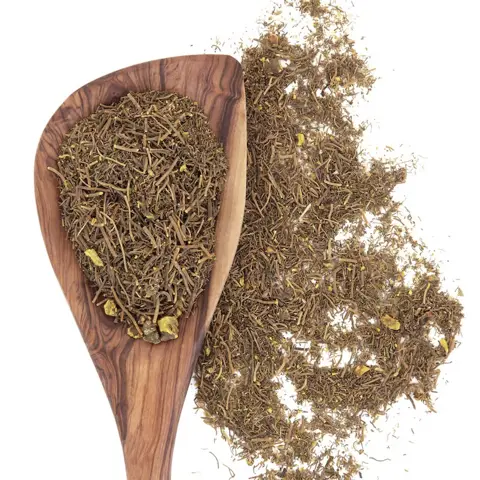
(This article is now part of the 'Long Reads' series of our Drug Safety Matters podcast. Listen to the article and a discussion with the author here.)
“The Indians dye their bright yellow with the root of a plant which grows spontaneously in the western woods, and which might, very properly, be called radix flava Americana”
It was in this manner that, in 1793, Mr. Hugh Martin introduced the American Philosophical Society to his experiments dyeing linen, wool, and silk, using the roots of a plant that he had observed Native Americans use in a similar manner. Mr. Martin was referring to the plant that Linnaeus had named “Hydrastis”, in the 10th edition of the Systema Naturae in 1759. It then became known as Hydrastis canadensis L., or ‘goldenseal’. Much later, in the 10th issue of the Bulletin of the Lloyd Library of 1884, we learn more about this plant’s main active ingredient hydrastine, an alkaloid, also called berberine in Europe at the time. In fact, the plant and its alkaloid(s) had medicinal properties: the plant was used as a diuretic, stimulant, and escharotic by Native Americans, while Americans praised hydrastine’s laxative and tonic properties and used it to treat nausea, heartburn, aphthous ulcers, inflammation and even morning sickness. Beyond its many uses, however, a common complaint were its staining properties, as anything it touched would essentially become yellow for quite a while. Notably, one will not be able to find any mentions of any adverse effects of either the alkaloid or the plant in the bulletin.
Today, we know more about hydrastine/berberine. For one, these names refer to two distinct alkaloids, which only share their colour. In fact, not only do they have different chemical structures, but they come from different parts of H. canadensis L.: the first from its roots, and the other from the flower, leaf, and stem. Berberine, however, is the only active ingredient that has seen some use to-date. Currently it is all the rage on Tik-Tok, where it is touted as being a ‘natural’ alternative to Ozempic (semaglutide), a type 2 diabetes medication that has also been trending on social media platforms as potentially being effective also for weight loss. Possibly, this idea comes from three studies that have been summarised along with eight others in an umbrella review on Berberine. In it, there are indications that berberine might have effects on body composition measures, such as body mass index and waist circumference. Much like in the past where the focus of such research were the beneficial effects, the included studies neglected to mention potential adverse effects, with only seven of 11 reporting them as part of their findings.

Even though these weight-loss effects appeared to be modest at best, we still focus on the benefits of interventions rather than their harms. For herbals, we tend to underestimate the adverse effects under the assumption that since they have been used for hundreds, if not thousands, of years, they must be harmless. This is not the case. Drug-induced liver injury has been associated with the use of several common herbals, among which Rheum palmatum L. (rhubarb), and Senna alexandrina Mill. (senna), Camellia sinensis (L.) Kuntze (green tea), Actaea racemosa L. (black cohosh), and Ephedra sinica Stapf (ephedra). Herbals have also been involved in interactions with medicinal products, the most famous example being unwanted pregnancies brought about by Hypericum perforatum L., which accelerates the clearance of oral contraceptives. Going back to H. canadensis L., it should not be taken during pregnancy as berberine can induce or worsen kernicterus, a form of brain damage in new-borns due to high levels of bilirubin in their blood.
Despite these potentially serious risks of harm, there are challenges to collecting data on herbals. For context, VigiBase, the WHO global database of case reports describing possible harm from medicinal products, contains around 141,800 reports on herbals. Some of these remedies have been used at least since the Eber’s papyrus from 3500 years ago, when the pyramids were three digits old. By contrast, medicinal products that have been on the market since 1968, when the Beatles were filling up Piccadilly Circus with their yellow submarine and VigiBase had just started, have several million reports. Part of this lack of data may be explained by patients’ tendency to not disclose the use of herbals to their health carers. In turn, health practitioners tend not to ask about the use of herbals or otherwise note information on the use of herbals by their patients. All this complicates signal detection, since it ultimately relies on how much data we have.
At a conference on the safety of herbals, hosted by the Drug Safety Research Unit last April, I gave an oral presentation on part of the results from a scoping review of signals on behalf of its co-authors. The study suggested that the number of signals of herbal medicinal products was strikingly low compared to the total number of signals included in the review and identified some signals of interaction between medicinal products and herbals. All the signals on herbals were based on clinical or statistical analyses of case reports, so their low numbers may have been driven by an overall lack of reports. Among the signals included in the analysis, there was one from 2003 on H. canadensis L. and yellow tooth stains in children, which was based on only two case reports. In the original manuscript, one of the reporters, a pharmacist, had indicated that berberine could be the cause. Eventually, in 2004, the German regulatory agency added this adverse effect to the monographs of products containing H. canadensis L.
It is rather surprising that this adverse effect had not been noted before the 2000s, for two reasons. First, in 1997, H. canadensis L. was quite a commercial success, to the point where it became an endangered species in North America. Second, it produces a visible, albeit mild, effect, the colour yellow. Yellow is one of the most conspicuous colours. It is a colour of warning in nature, it is used in alert signs, and to designate school buses. Yellow incites action or reaction to some situation, in pharmacovigilance it does so to evidence. I would not be the first to draw the parallel between signals and the colour yellow: as succinctly written by Ralph Edwards in the editorial to the first 2016 issue of SIGNAL, the analogy works insofar as we consider signals as warning signs and that we do not dwell on them. The more data we have, the brighter the light. In the case of herbals, despite their long-established presence in the history of humans, the light is dimmed – even when, in nature, they bring about a bright yellow.
Read more:
Z Li et al., "Berberine and health outcomes: An umbrella review", Phytotherapy Research, 2023.
"Goldenseal" - nccih.nih.gov/health/goldenseal
J Aronson, "Meyler's Side Effects of Herbal Medicines", Elsevier Science, 2008.




